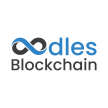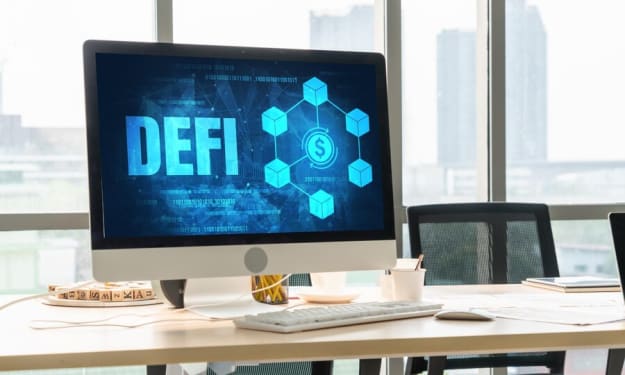How to Build a DAO | A Quick Explainer
In this quick explainer, find out what it takes to build a modern DAO (decentralized autonomous organization)

Due to their decentralized nature, DAOs (Decentralized Autonomous Organizations) are becoming a well-liked business governance model in the blockchain industry. You can build a DAO quickly with blockchain development services and a little technical know-how. But first, you should better have a solid strategy and a robust support system. Let’s go over the minimum requirements and DAO setup instructions.
Understanding a DAO (Decentralized Autonomous Organization)
An autonomous organization managed by a community is known as a “Decentralized Autonomous Organization,” or DAO. The underlying rules are established by smart contracts, which also carry out the selected course of action. Ideas, votes, and even the code itself are always available for public scrutiny in a DAO.
A DAO is governed entirely by its members, who collaborate to make key project decisions like investing in new technology and allocating funds.
In general, community members draught proposals for the protocol’s future operations and then gather to vote on each one. The rules coded within the smart contract then accept and enforce proposals that reach a certain degree of consensus.
The traditional hierarchical structures found in large corporations are replaced by community collaboration under this paradigm. Each DAO participant has a role to play in system administration.
The alignment of incentives is a feature of this framework. In other words, it is in the person’s best interest to vote honestly and to only accept ideas that benefit the protocol as a whole.
The worth of the tokens that each DAO member owns increases as a result of the increased usage of a sound, robust protocol. As a result, token holders benefit as the system does.
How to Build a DAO
Build a Strong Foundation
First, decide why DAO is necessary, what function it will serve, and how it will operate.
To build a DAO, human judgment is required to see the potential, maybe find partners, confirm the necessity, and design the procedures that can be automated and integrated into smart contracts.
It is crucial to discuss the objective with other DAO supporters to clear up any misunderstandings regarding the governance structure of the DAO.
It would be best if you also have an encrypted wallet with storing and transactional capabilities.
The first thing investors or funders will consider when considering a company is the source of revenue.
So how does a DAO generate revenue?
The primary source of revenue for DAOs is dividends. DAOs spend money to generate dividend income. DAO creators can also make money from their effort by persuading peers to participate in the DAO based on its business strategy.
Identify the Ownership
Establishing ownership for DAO members is the next step after all parties have agreed on the DAO’s purpose. This step promotes the growth and development of decentralized independent organizations. Because ownership is typically tokenized, a DAO can transfer ownership to its members in various methods. “Airdrops” and “rewards” are the two strategies that DAOs commonly use.
With airdrops, tokens are given out to participants based on their contributions and actions within the group. Rewards are bonuses given to individuals who complete tasks and reach objectives. Ownership is acquired by members through native token-based incentives. Additionally, tokens can be bought on decentralized marketplaces like Uniswap.
Establish a Framework for Governance
Here, it is decided how choices will be made after a DAO has been established. The most popular technique for establishing decision-making guidelines is “token-weighted voting.”
Each token that a voter holds signifies one vote. Members decide based on the preferences of other members after submitting ideas using a tool like Snapshot, and the results are then automatically carried out by smart contracts.
Define the DAO Class
According to your objectives, you must specify the kind of decentralized independent organization you want. The following types are some of the most prevalent:
According to Protocol DAO, the project’s tokens allow their owners to suggest changes, cast a vote for or against them, and exercise their right to vote.
In addition to enabling producers to prove their ownership of their work, Collector DAO brings together supporters of non-fungible tokens (NFTs).
Investment DAO is an open, accessible platform that makes it possible for startups and DeFi initiatives to raise money.
Users of Grant DAO can decide on the distribution and allocation of the money they have accumulated in the grant pool.
By using Entertainment DAO, token creators can finance new initiatives like play-to-earn games and metaverse activities while also building a stronger community around their collections.
The crypto community is strengthened by social networking, and Social DAOs provide a platform for unrestricted conversation, idea sharing, and fundraising. However, a person must possess a certain quantity of tokens or receive a personal request to join a social DAO.
Create Incentivization and Rewards Mechanisms
Building confidence involves implementing rewards and incentives as part of the many advantages provided to DAO contributors and members. Members and contributors who have ever used the DeFi protocol under review are given native governance tokens. These tokens represent ownership rights but are worthless in and of themselves.
DAOs may also grant rewards in the form of titles, marks, or even digital currencies like ETH, Tether (USDT), or USD Coin (USDC). The reward structure can be further improvised after the DAO conceptualization process is complete.
Build a DAO
Join forces with skilled blockchain developers who can provide a first-rate decentralized solution. They will give you advice on which blockchain would be best to use as the foundation for your DAO and which networks you would need to promote. The same is true of cryptocurrency accounts. Additionally, you will require smart contract development that is reliable, quick, and fault-tolerant.
Verify a DAO
It is a must to perform comprehensive testing to ensure that everything functions as it should, without any bugs that could endanger the platform or worsen the user experience.
Launch a DAO
You can deploy your DAO to the mainnet once everything is up and running smoothly. To learn about the concerns and preferences of your users and be able to update as necessary, you will need to collect input from them. And don’t neglect to perform regular quality control tests to make sure the platform is operating without a hitch.
For more information on how to build a DAO, connect with smart contract developers.
About the Creator
Oodles Blockchain
Full-Stack Blockchain Development Services and Solutions for Startups and Enterprises for Business Excellence






Comments
There are no comments for this story
Be the first to respond and start the conversation.